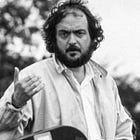Just Imagine: A 100-Year-Long Film
One of the most important aspects of this film is the depiction of human progress spanning a mini-century.
One of the most important aspects of this film is the depiction of human progress spanning a mini-century. The film opens with the statement, "Imagine what fifty years can do, take a glimpse into 1880s New York!" The initial scene presents a life devoid of technology, contrasting with David Butler's vision of the future. People greeting each other on the streets, "Penny Farthing" bicycles with large front wheels roaming New York streets, a double-decker horse carriage prepared for inter-city travel, and women dressed similarly to Claude Monet's painting "Umbrella Woman, Madame Monet and Her Son" are some of the elements. The director uses this short example from 1880 to illustrate how life undergoes a transformation in New York by the time 1930 arrives. The change is staggering, with double-decker horse carriages replaced by double-decker buses, bicycles replaced by cars, respect replaced by impatience, and solitude replaced by chaos in the 1930s. The reference to a pedestrian crossing the street in 1880, where the horse carriage would stop and the driver would apologize, becomes a clever allusion to a man unable to cross the street due to car congestion and oppression fifty years later.
As mentioned in the above paragraph, we witness the transition from 1930 to the 1980s in New York with the following statement: "If the last fifty years have seen such a significant change, imagine New York in the 1980s!" It paints a picture of a society where everyone has a number instead of a name, and the government dictates whom one should marry, a history where 1980 is imagined! David Butler's portrayal assures us that the world he presents is more advanced than our own. The sky is not visible due to the density of single-person airplanes replacing cars. These planes move in a coordinated traffic system, and there is even mention of an "Sky Police" intervening and floating in the air. The skyline is adorned with skyscrapers supported by multi-level elevator paths and bridges. Finding a work that captures the comparison between the past, present, and future as well as this one does in the cinema of that era is challenging.
In 1980s New York, everyone is referred to by numbers instead of names. J-21 (John Garrick), one of these characters, desires to marry LN-18 (Maureen O'Sullivan). However, as mentioned earlier, 1980s New York is a society where the government decides whom one should marry. Despite J-21's achievements and success, the court does not favor his marriage to LN-18 and instead approves his marriage to MT-3 (Kenneth Thomson). J-21 has no choice but to wait for the end of the four-month period given to him.
In this utopian world, pills replace meals, and only legitimate babies can be purchased from vending machines. Yes, vending machines! Even the symbol of innocence, the "baby," is nothing more than a product in this world. In addition to being a science fiction film, Just Imagine is also a science fiction musical, witnessing many duets and songs within its 109-minute duration. To stay on track with the plot, let's return to the gloomy day J-21 experiences. His close friend, RT-42, will take him to watch an experiment involving dozens of scientists, aiming to revive a man who died from a lightning strike while playing golf in 1930. The experiment is successful, bringing the man back to life fifty years later in 1980. The humorous aspect of the experiment is that, upon revival, the man will be disappointed not to find the golf club he was holding at the moment of the accident. J-21 and RT-42 will take care of the resurrected "Peterson," who will give himself the name "Single-O" since names have lost their validity in the 1980s. Notably, the actor playing "Single-O" in the film is El Brendel, known as a dialect expert in 1920s America. Considering the significant differences between the English spoken in 1930s New York and that in 1980, Brendel's inclusion seems appropriate.
On the same evening, while LN-18's father attends a show, MT-3 decides to stay home with his close friend and nurse B-27. B-27's unique feature is that she must administer an injection to "Single-O" every three hours for him to survive. J-21 and RT-42 head to LN-18's house, with J-21 contemplating confessing his love to LN-18 once again. However, MT-3, LN-18's court-approved husband, decides to return home early, disrupting all plans. J-21 and RT-42 hide, but the combination of "Single-O"'s overdose on pills and alcohol ruins the plan, putting J-21 in a difficult situation against MT-3. J-21 instructs LN-18 to go to her supposedly true love to avoid reporting the incident to the government, and J-21 falls into depression.
At this crucial moment, Z-4, one of New York's most famous inventors, contacts J-21 and makes him an offer. The offer is that since J-21 couldn't marry LN-18 due to her lack of eligibility, if he embarks on a journey, he will become the most distinguished man in the world upon his return. The journey will last three months and twenty-five days, and when J-21 returns to Earth, he will be able to have LN-18. J-21 accepts this challenging mission, embarking on the journey with his close friend RT-42 and "Single-O," who sneaks onto the rocket. When the rockets land on Mars, the planet's surface is covered with Banyan trees specific to India, reflecting a monsoon climate. At least, this is the impression I gathered when watching the film. Following their arrival, the trio is accepted by the Queen and King of Mars and finds themselves at a Martian Opera through a royal invitation. In Butler's created Mars, everyone has a twin, including the King and Queen. The trio is attacked by the evil twins Booboo and Boko, manages to escape in a peculiar way, and upon their return to Earth, J-21 can marry LN-18, and "Single-O" can reunite with his much older son Axel.
Another milestone to note about this film is the astounding Art-Deco cityscape. The city, constructed by hundreds of technicians working tirelessly for five months in a hangar established for the production of zeppelins for the American army, cost $168,000 at the time. It utilized 15,000 miniature bulbs, and nearly seventy arc lights were used to illuminate New York from above.
The last topic I mentioned, the meeting between the father and the elderly son, is not to be underestimated. Considering this reunion between Single-O and Axel, doesn't it remind you of something? I would like to ask you here what this reunion of Single-O with Axel brings to your mind. Can it not be related to the concept of relativity and the meeting of pilot Cooper with his children Murph and Tom in Christopher Nolan's film "Interstellar," where due to the effects of gravity, they are the same age or even older than him when they meet? In my opinion, yes. On one side, there's a primitive representation of this process due to technological limitations, and on the other side, a project where the highest level of cinematic technology is available in the 21st century. Whether Nolan was influenced by Butler's "Just Imagine" or Tarkovsky's "Solaris" remains uncertain, but the idea that he may have been inspired will surely provoke thought.










